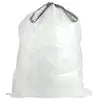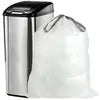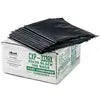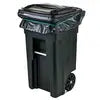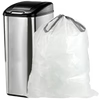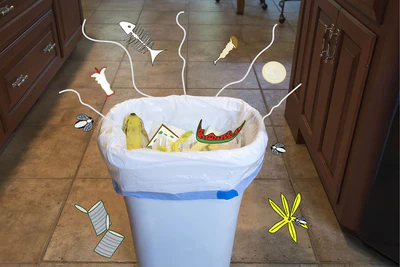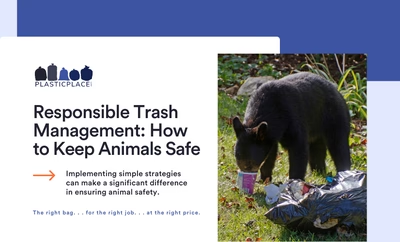 The basic difference between low and high where trash bag density is concerned boils down to chemistry - specifically, to chemical changes that happen when you turn ethylene gas into polyethylene (plastic). Polyethylene will have either a low or high density depending on its exposure to heat and pressure.
The basic difference between low and high where trash bag density is concerned boils down to chemistry - specifically, to chemical changes that happen when you turn ethylene gas into polyethylene (plastic). Polyethylene will have either a low or high density depending on its exposure to heat and pressure.  Expose the polyethylene to higher temperatures, and it's molecules branch out - they become less dense - creating a low density trash bag that's flexible, highly puncture-resistant and thicker in it's composition; a perfect choice when disposing of pointy objects like nails, glass, wood chips or sharp edged boxes. By contrast, when you expose the polyethylene to lower temperatures and lower pressure its molecules tend to stay tightly together - the molecular composition is denser - resulting in a trash bag that is stiff, strong, capable of holding lots of weight, but also thinner and consequently not ideal for sharp objects. High density trash bags are great for papers, tissues, food and linens - the typical stuff of bathrooms and kitchens. So, when we're talking about how dense a trash bag is, we're talking not only about the trash bag's molecular structure, but also about what and how much you can put inside. Think of it this way: Go high when you're piling up papers and pie and low if it's sharp like the beak of a crow. (Sounds silly, but it works.) Whether you choose low or high, you can count on a bag that's dependable and durable. But tissues and tomatoes are a far cry from nails and needles, and knowing which bag to use will ensure of peace of mind.
Expose the polyethylene to higher temperatures, and it's molecules branch out - they become less dense - creating a low density trash bag that's flexible, highly puncture-resistant and thicker in it's composition; a perfect choice when disposing of pointy objects like nails, glass, wood chips or sharp edged boxes. By contrast, when you expose the polyethylene to lower temperatures and lower pressure its molecules tend to stay tightly together - the molecular composition is denser - resulting in a trash bag that is stiff, strong, capable of holding lots of weight, but also thinner and consequently not ideal for sharp objects. High density trash bags are great for papers, tissues, food and linens - the typical stuff of bathrooms and kitchens. So, when we're talking about how dense a trash bag is, we're talking not only about the trash bag's molecular structure, but also about what and how much you can put inside. Think of it this way: Go high when you're piling up papers and pie and low if it's sharp like the beak of a crow. (Sounds silly, but it works.) Whether you choose low or high, you can count on a bag that's dependable and durable. But tissues and tomatoes are a far cry from nails and needles, and knowing which bag to use will ensure of peace of mind.
 4.9 out of 5
4.9 out of 5  Mix & Match: Buy any two products for 10% off!
Mix & Match: Buy any two products for 10% off!













